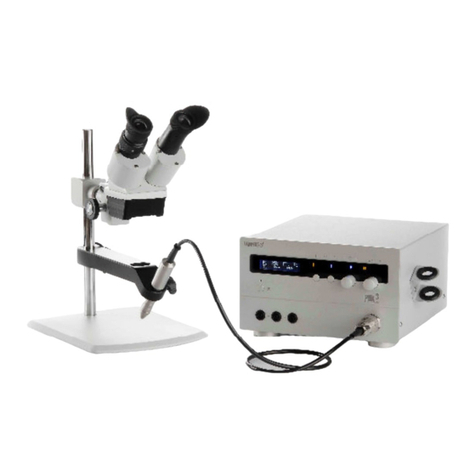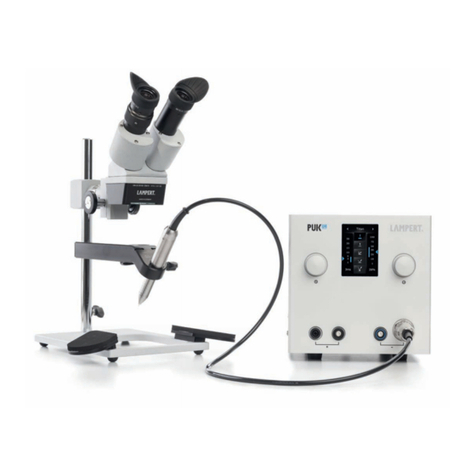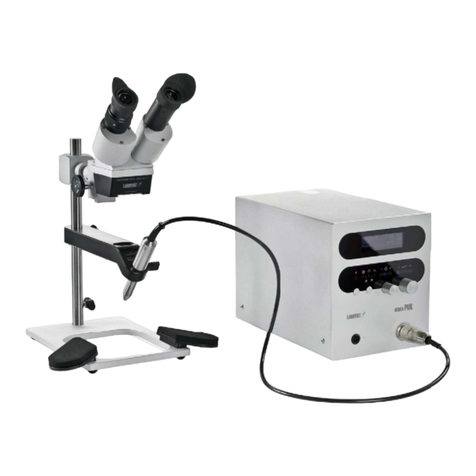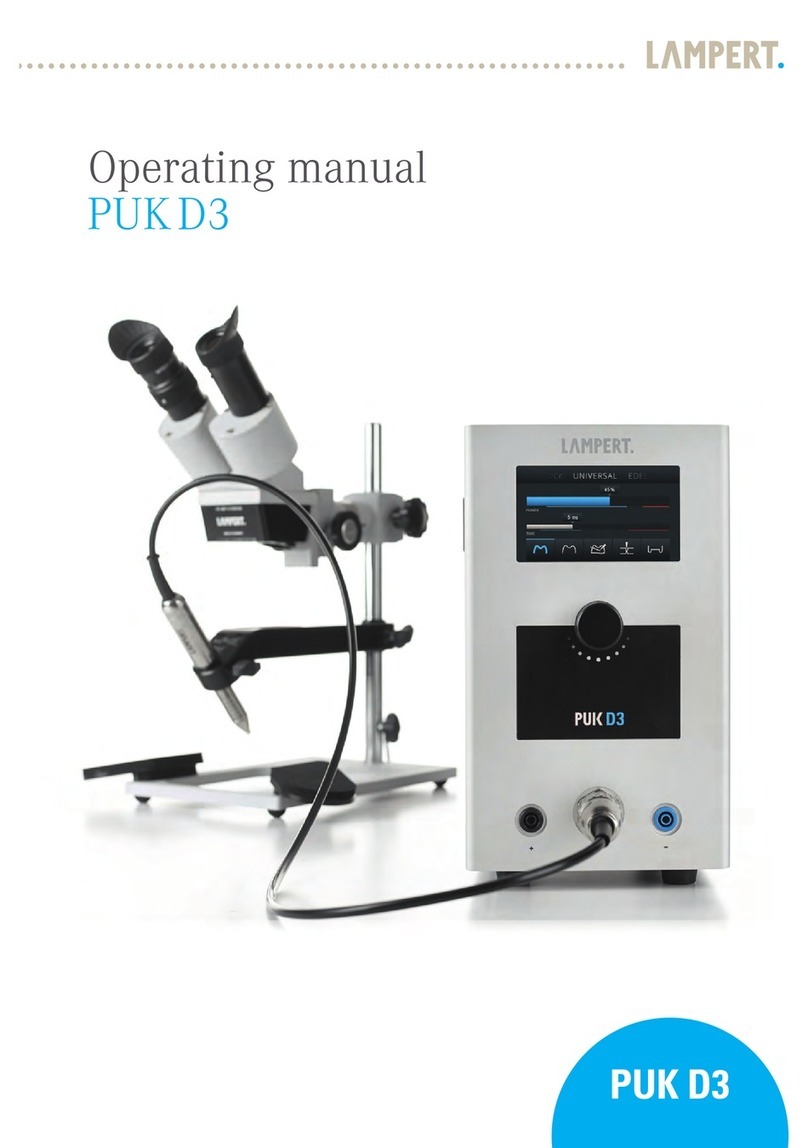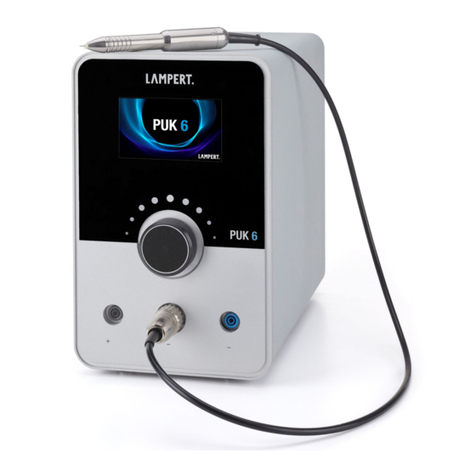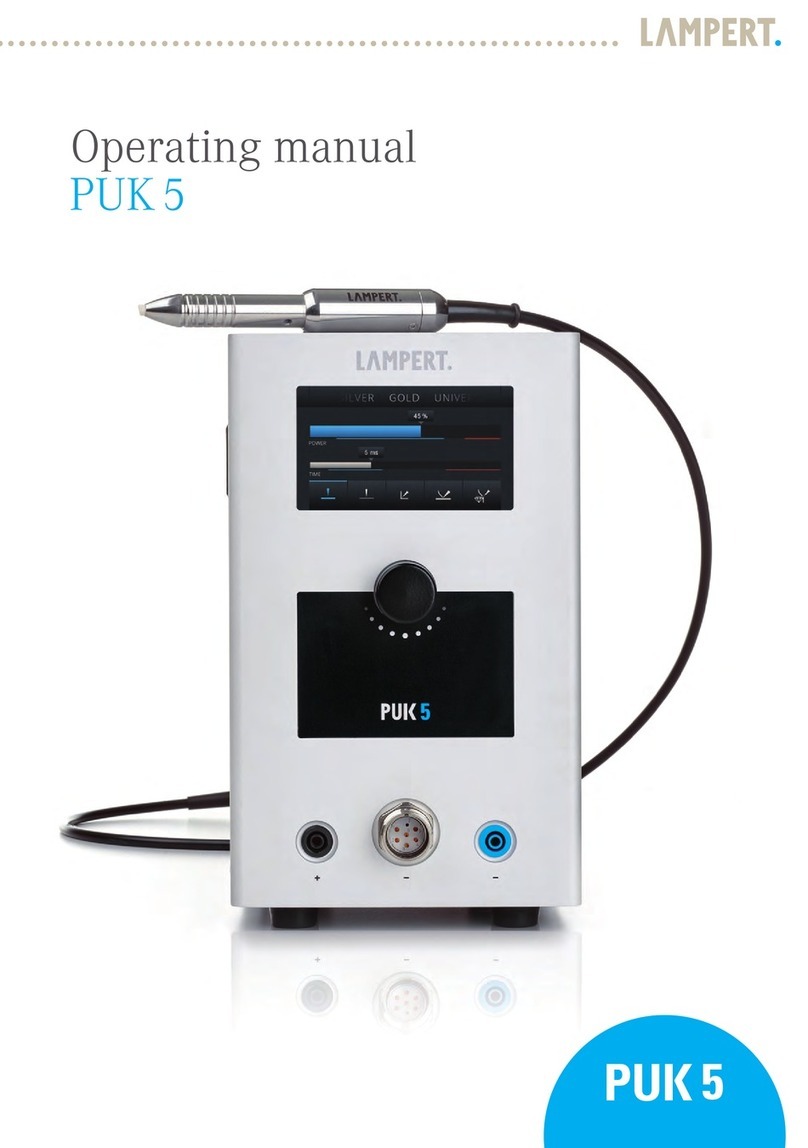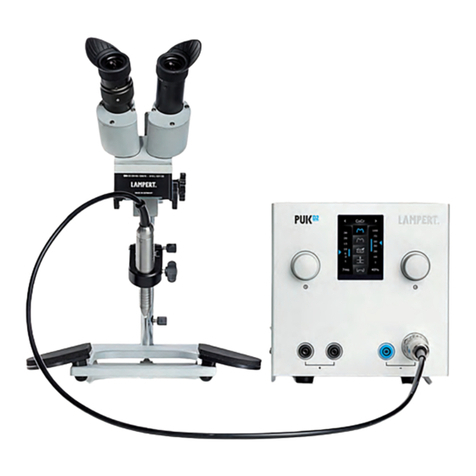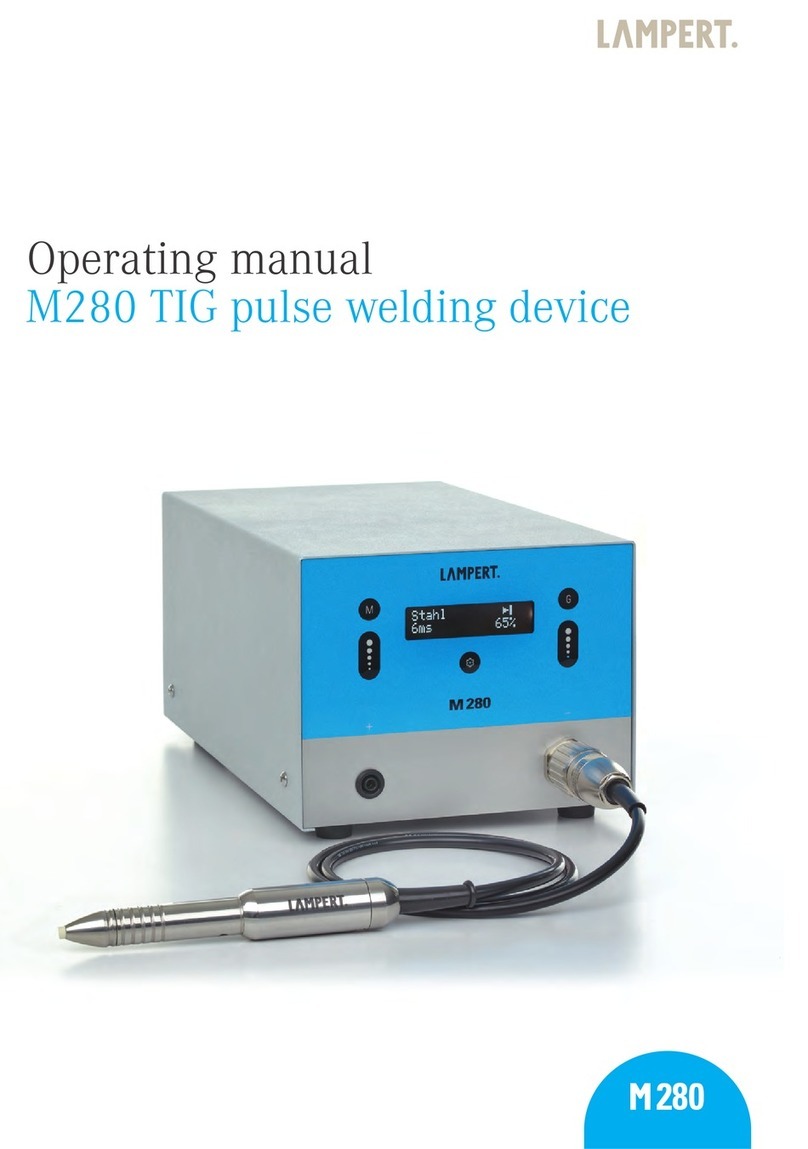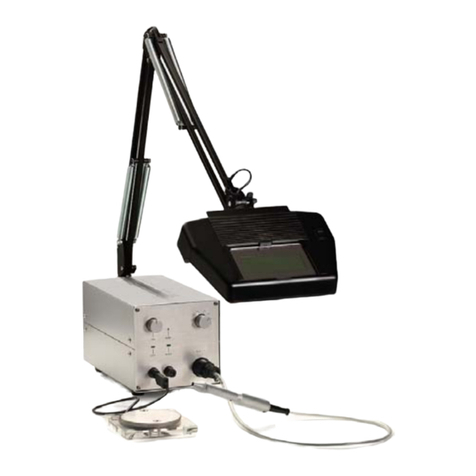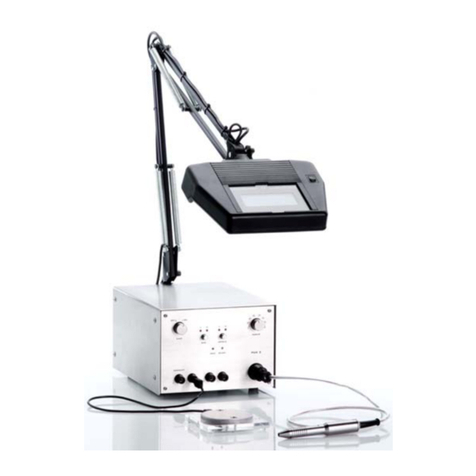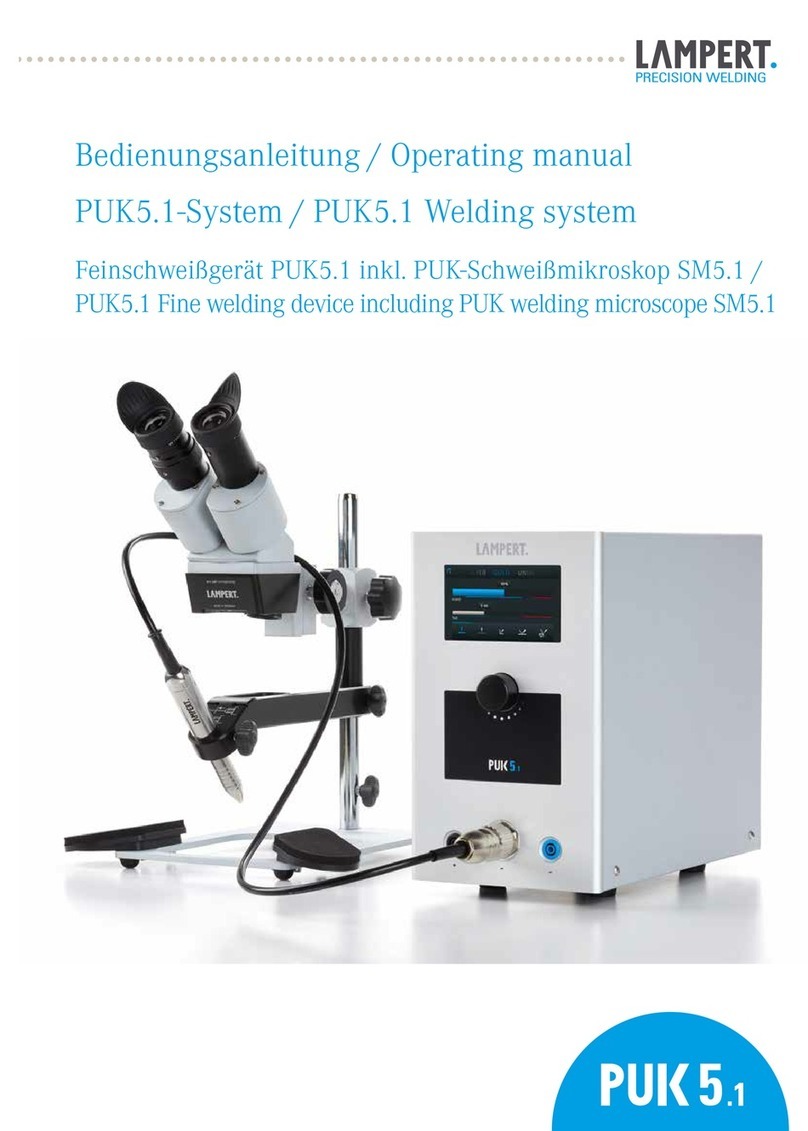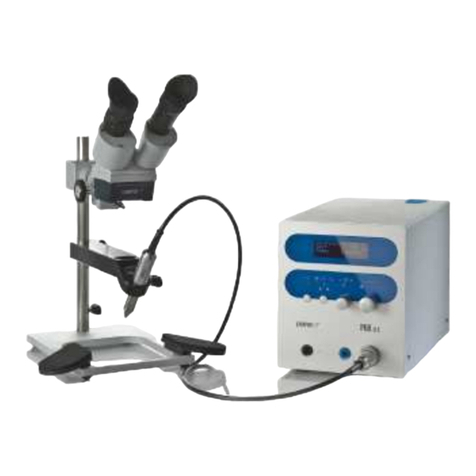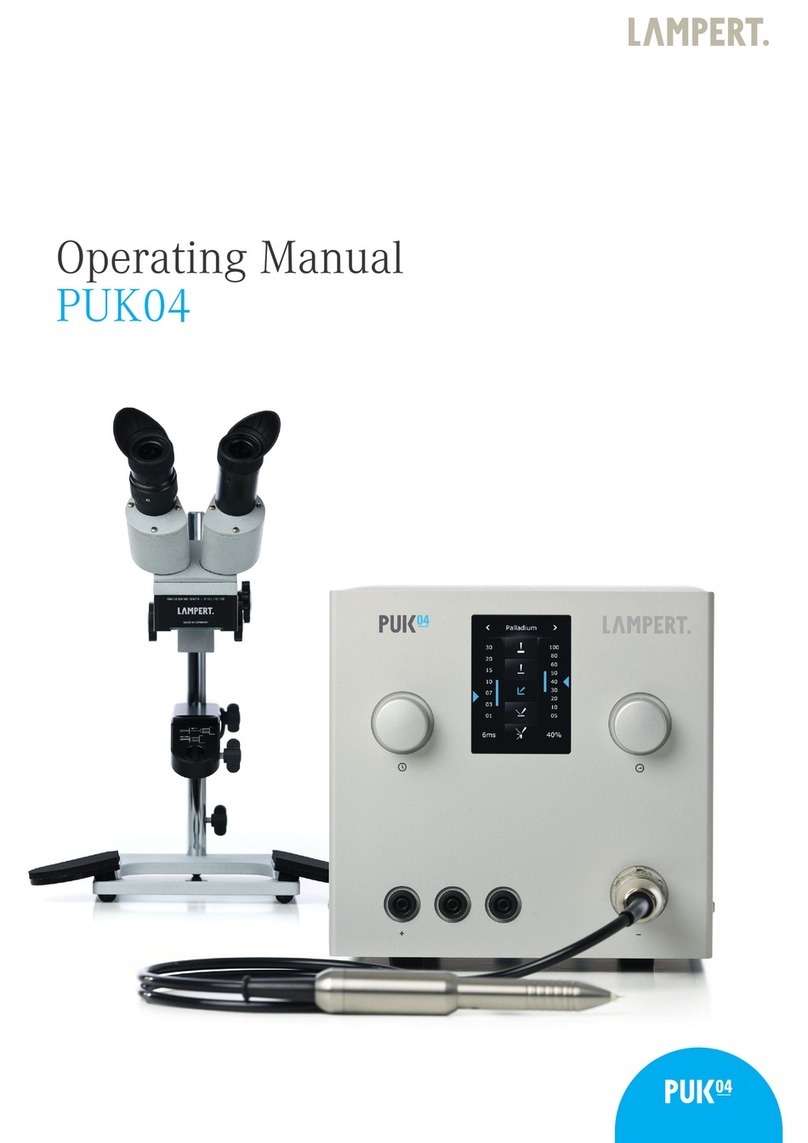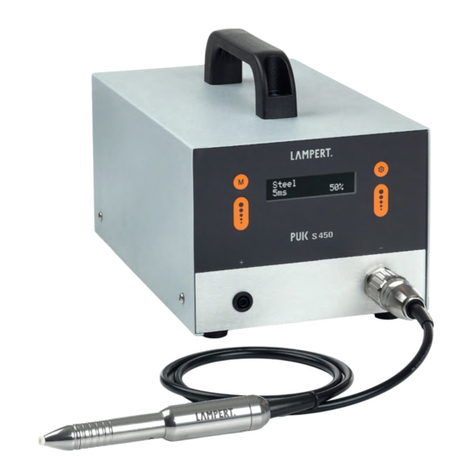
Lampert Tools USA 2020 2
Important!
"Important!" designates user tips and other especially useful information. This is not a signal word for hazardous or
dangerous situations.
2. APPROPRIATE USE (FIELD OF APPLICATION)
•Outdoor operation is impermissible. Use this device only
in dry rooms!
•Welding on all metals and alloys that are suitable for arc
welding.
GENERALLY NO LIABILITY IS ACCEPTED FOR THE DURABILITY OF THE WELDING. WE RECOMMEND
THAT THE WELDING BE CHECKED IN EVERY CASE
•SM5.1: Observation and microscopic viewing of objects
through the ocular of the microscope and illumination of
the working area.
•The SM5.1 unit may only be used for welding if it has
been properly connected to a PUK fine-welding device.
3.1 GENERAL SAFETY REQUIREMENTS
PERSONS WHO WEAR ACTIVE IMPLANTS (HEART PACEMAKERS) MUST MAINTAIN A SAFETY
DISTANCE OF 20 CM BETWEEN THE WELDING CURRENT CABLE / SOURCE OF THE WELDING
CURRENT AND THE IMPLANT
The opening of the device is only permitted when
undertaken by an electrician. Before opening
remove the mains cable and ensure that the device
is de-energised. Discharge any components in the device
that could hold electrical charge.
In case of doubt or uncertainty, always consult with a
specialist. Our customer support department is naturally
always available to assist you with their professional trained
personnel, appropriate tooling and equipment.
Always use the original cables and ensure that workpiece
clamps are properly attached.
Both the mains and welding currents can be a source of
danger.
The device must be isolated from the mains power when
undertaking any repair or maintenance work on the power
source. The power socket is to be clearly blocked when
undertaking any work on the system beyond minor
manipulations where it is necessary to leave the workplace,
even for brief periods.
The highest and thus the most dangerous voltage in the
welding circuit is the no-load voltage. The highest
permissible no-load voltages are recorded in the national
and international regulations in accordance with the type of
welding current, construction of the current source and the
extent of the electrical hazard to the workplace.
If it can be assumed that risk-free operation is no longer
possible, the unit must be put out of operation and secured
against being unintentionally restarted.
It can be assumed that risk-free operation is no longer
possible, if
•the equipment shows visible signs of damage,
•malfunctions occur,
•or the equipment is no longer working.
The PUK must, as standard, be operated with a mains
voltage of 115 V~.
Yellow-green wire = protective earth terminal (PE). The
other wires L1 and N are to be connected to the phase and
neutral conductors of the power plug.
The welding device is factory-adjusted to 115 V!
This means that as a result of the tolerance range +/-10%,
the system can also be operated at 110 V~. Devices
configured to voltages other than 115 V will be designated
as such by means of a label.
THE DEVICE MUST ONLY BE OPENED BY
AUTHORISED SERVICE PERSONNEL!
IF THE DEVICE HAS BEEN CONFIGURED FOR A
CUSTOM VOLTAGE, THE TECHNICAL DATA ON THE
DEVICE SPECIFICATION PLATE APPLY! MAINS PLUGS
MUST CORRESPOND TO THE MAINS VOLTAGE AND
POWER CONSUMPTION OF THE WELDING
EQUIPMENT (see technical data!)
THE FUSING FOR THE MAINS SUPPLY MUST BE
MATCHED TO THE POWER CONSUMPTION OF THE
WELDING EQUIPMENT!
ONLY USE THE SUPPLIED MAINS CABLE!
